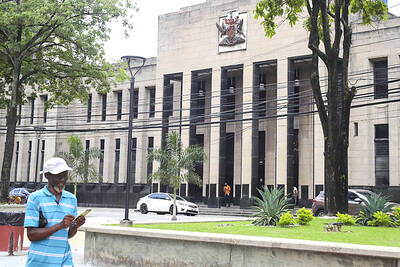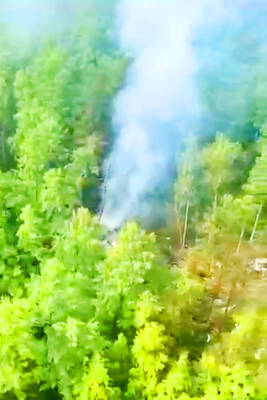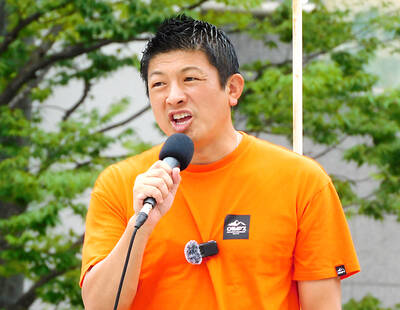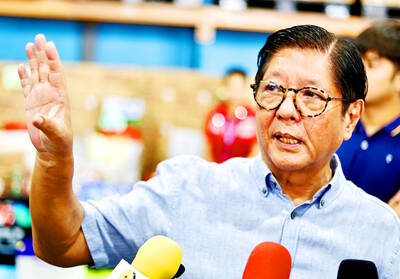To make money in Colombia’s jungles it helps to have guns, whisky and a river. Hardly conventional business tools, but this is not a conventional environment. There is armed conflict, abundant natural resources, extreme poverty, isolation — and fortunes to be made.
In Choco, a vast province spanning the Atlantic and Pacific coasts, a boom is under way. Mining, logging and palm oil companies are moving into forests packed with precious metals, tropical hardwood and fertile soil. Geologists are scouring mountains for minerals while barges laden with timber and palm chug down the Atrato river, as there are few roads.
The problem, locals say, is that many companies act like robber barons, pillaging rather than investing, and accuse firms of perpetuating conflict by making deals with rebels and militias who control swaths of territory.
Some companies pay armed groups to chase peasants from their land, while others trick their way into grabbing communal land titles, said Richard Moreno, a lawyer and civil association head.
“They’re buying many of the leaders — take them to a fancy hotel in Medellin, ply them with whisky and get them to sign away property deeds,” he said.
Choco’s population has been uprooted and terrorised by armed groups whose political aims mask a scramble for natural wealth.
Logging used to be a small-scale affair but in the past decade merchants have moved in and bought up logging licences from communities which have collective titles.
About 4,000 hectares can be legally felled each year. In theory the trade is regulated by an official agency, Codechcoco.
“There is some illegal chopping, but not much,” said Damian Mosquera, head of the agency.
But the agency is discredited. More than 800 transport permits went missing in 2006 and 2007 and officials have been caught taking bribes in more recent scandals.
Leaders of an indigenous group whose land includes a forest reserve, said gunmen forced them to hand over licences to logging firms which cleared way above the permitted limit.
The Association of Communities of Lower Atrato estimates that 90 percent of logging is illegal.
Meanwhile, palm oil companies swept in in the 1990s on the heels of paramilitaries who killed and evicted peasants from their fields.
Thousands of farmers, displaced and desperate, sold their land to companies that planted thousands of hectares of palm.
State loans have funded the palm expansion, with some firms returning the favour by funding Colombian President Alvaro Uribe’s election campaigns.
The government, embarrassed by international scrutiny and criminal investigations into 23 palm companies, recently ordered some firms to return land to peasants.
Uribe’s administration has promoted mining as a spur to development with relaxed regulations helping annual gold production to more than double last year.
The problem for indigenous Embera communities in Choco is that one of the new sites earmarked for exploration is a sacred mountain, Jaikatuma.
The US Muriel Mining corporation dispatched geologists to test for gold, silver, platinum, copper and coal. The company said it had approval from Embera leaders but opponents held a mass meeting which rejected the proposed mine.
In January 700 Embera surrounded the Muriel camp and forced the company to withdraw. It was a rare indigenous victory against corporations — but perhaps fleeting. Muriel has pledged to return with state backing.

Trinidad and Tobago declared a new state of emergency on Friday after authorities accused a criminal network operating in prisons across the country of plotting to kill key government officials and attack public institutions. It is the second state of emergency to be declared in the twin-island republic in a matter of months. In December last year, authorities took similar action, citing concerns about gang violence. That state of emergency lasted until mid-April. Police said that smuggled cellphones enabled those involved in the plot to exchange encrypted messages. Months of intelligence gathering led investigators to believe the targets included senior police officers,

FOREST SITE: A rescue helicopter spotted the burning fuselage of the plane in a forested area, with rescue personnel saying they saw no evidence of survivors A passenger plane carrying nearly 50 people crashed yesterday in a remote spot in Russia’s far eastern region of Amur, with no immediate signs of survivors, authorities said. The aircraft, a twin-propeller Antonov-24 operated by Angara Airlines, was headed to the town of Tynda from the city of Blagoveshchensk when it disappeared from radar at about 1pm. A rescue helicopter later spotted the burning fuselage of the plane on a forested mountain slope about 16km from Tynda. Videos published by Russian investigators showed what appeared to be columns of smoke billowing from the wreckage of the plane in a dense, forested area. Rescuers in

A disillusioned Japanese electorate feeling the economic pinch goes to the polls today, as a right-wing party promoting a “Japanese first” agenda gains popularity, with fears over foreigners becoming a major election issue. Birthed on YouTube during the COVID-19 pandemic, spreading conspiracy theories about vaccinations and a cabal of global elites, the Sanseito Party has widened its appeal ahead of today’s upper house vote — railing against immigration and dragging rhetoric that was once confined to Japan’s political fringes into the mainstream. Polls show the party might only secure 10 to 15 of the 125 seats up for grabs, but it is

Philippine President Ferdinand Marcos Jr is to meet US President Donald Trump this week, hoping Manila’s status as a key Asian ally would secure a more favorable trade deal before the deadline on Friday next week. Marcos would be the first Southeast Asian leader to meet Trump in his second term. Trump has already struck trade deals with two of Manila’s regional partners, Vietnam and Indonesia, driving tough bargains in trade talks even with close allies that Washington needs to keep onside in its strategic rivalry with China. “I expect our discussions to focus on security and defense, of course, but also